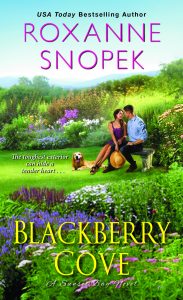Me, in Concert
- At March 29, 2022
- By Roxanne Snopek
- In Life, Roxanne Writes On
 0
0
Me, in Concert
Being a beginner at 37, was I strong enough to fail?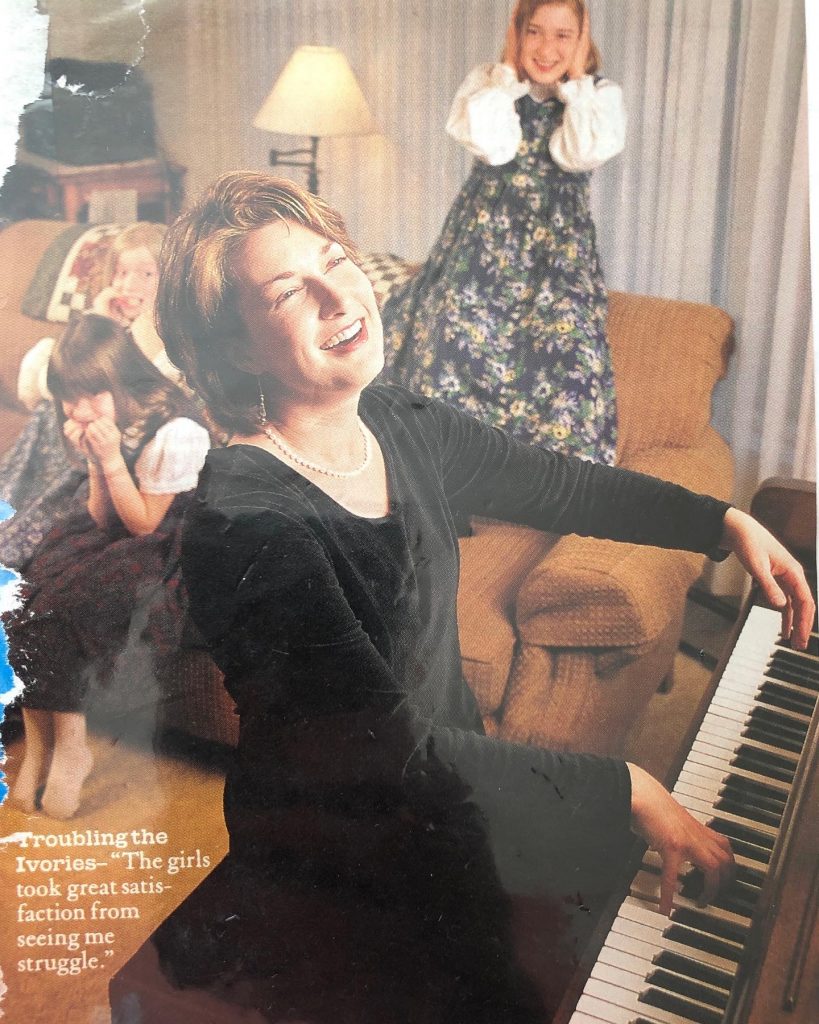
This is from an essay I wrote on parenting for the July 2002 issue of Reader’s Digest. What a crazy time of life… three homeschooled daughters, part-time admin/vet tech work at our veterinary hospital plus getting my writing career going. Also, an average of 2.5 pets per capita in our house. Five people. Do that math.
I’d forgotten how hard it was to keep at something while having more failures than successes.
It was a marvellous time of life. Part of me misses being a young mother. A bigger part of me is so grateful for the memories, and that I’m in another stage of life I love just as much.
The main message? Don’t be afraid to fail. There’s more to be learned from failures, and continued trials, from practice, practice, practice, followed by that one magical success… than there is from easy success. (At least, that’s what I hear. Easy success hasn’t been my journey.)
So have a great day, my friends. Try something new. Tell me about your wonderful, spectacular, life-affirming fails. Repeat. And when that glorious, elusive success arrives, shout it to the mountaintops!
Original essay: copyright © Roxanne Snopek 2002
Photo credit: copyright © Chick Rice 2002
All Rights Reserved
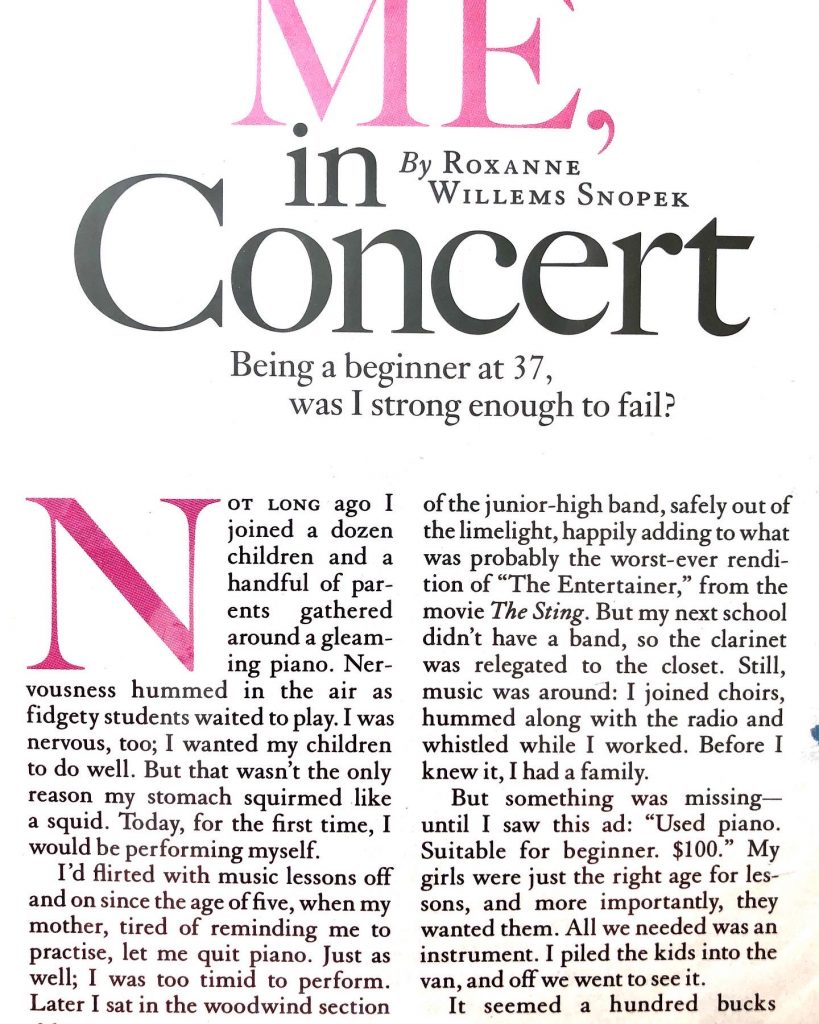
Hallmark Book Club Pick!
A Dog Called Valentine a Hallmark Book Club Featured Title!
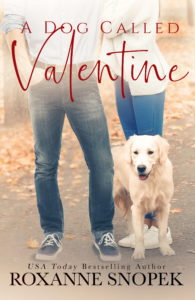
Hallmark Book Club Pick!
A Hallmark Book Club Featured Title
Larissa Wohl, host of numerous Hallmark Channel Specials and resident “Pet Rescue Expert,” also runs the Hallmark Book Club. This month, she’s chosen my book!
Larissa has been hosting the club for more than a year, and always picks stories focused on the human-animal bond.
Past Hallmark Book Club titles include:
Who Rescued Who by Victoria Schade
The Wonder of Lost Causes: A Novel by Nick Trout,
Atticus: A Woman’s Journey with the World’s Worst Behaved Dog by Sawyer Bennett
Join me and Larissa at the February meeting!
On Thursday, February 24/2022 at 5 pm PT I’ll be chatting with Larissa about A Dog Called Valentine via Zoom. Will you join us? I’d LOVE to see some familiar faces there.
If you’d like to pop in (you don’t need to join the club) email Larissa at [email protected] for the Zoom link and she’ll save you a spot. You can also email me at [email protected] and I’ll get you set up.
I can’t wait to see you! It’s going to be such fun!
Love Note From the Lake: July ’21
E-bikes!!
Last summer, we rented e-bikes on a trip to the Okanagan for a wine tour. Neither of us had ridden for years (decades, for me, probably) and with one or two iffy knees 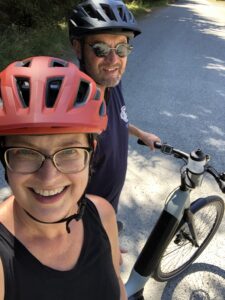 between us (mine, usually) we weren’t sure what to expect. Well. We LOVED it!
between us (mine, usually) we weren’t sure what to expect. Well. We LOVED it!
Of course, during COVID, because everyone was doing stay-cations, there were none to be had. Anywhere.
So this year, we vowed to pull the trigger on this and last week, we finally did.
This, people, is the way to ride bikes. Especially if you live in a hilly area, like BC and have, ahem, passed one (or more) milestone birthdays. 😁
We’re having so much fun with them. We’ve heard that falling off isn’t an “if” so much as a “when” and “how much damage” so I expect a few scrapes in our future… and I don’t care! It’s so much fun!
Summer Reading Sale!
My entire three-book Sunset Bay series is currently on sale. I don’t know how long it will last, so check out the links below quickly!
Book #1: Sunset Bay Sanctuary $0.99
The spectacular scenery and craggy beaches draw tourists to the small Oregon town of Sunset Bay. But Sanctuary Ranch offers a different kind of experience: a refuge for people—and animals—desperate for a new beginning . . .
Book #2: Driftwood Creek $0.99
Nestled among the forests and coves that dot the Oregon coast, Sanctuary Ranch is a home for strays–both human and animal–and the starting off point for second  chances . . .
chances . . .
“… engrossing… an earthy, sensuous, slow-building romance between two scrappy, slow-to-trust misfits…Rich and atmospheric…Complex and intriguing.” – Publishers Weekly STARRED REVIEW
Book #3: Blackberry Cove $1.99
Amid the wildly beautiful beaches of Sunset Bay, Oregon, lies Sanctuary Ranch, a refuge for strays, both human and animal. A place where love and healing go hand-in-hand . . .
“Fans of small town series with character driven plots, such as those by Susan Wiggs and Debbie Macomber, will find that Sunset Bay hits the spot.”
—Booklist
Today’s Love Note

150′ later….

Entry site from the road
This month’s Love Note goes out to our neighbours. If you follow me on Instagram or Facebook, you’ve seen the excitement that occurred here this week, when a Ford F150 missed the curve in the
road and crashed through our fence.
No injuries, amazingly. The driver lost control when he blacked out behind the wheel, but walked away unharmed. I happened to be around the corner getting the mail, or I’d have been in the yard when it happened… eek. Ray wasn’t home at the time, thank goodness. We both spend so much time outside.
The truck took out three 6″X6″ fence posts, four panels, traveled an unbelievable 150 feet, much of it in the air, and landed near the creek behind our house. The sound was unbelievable, an explosion. He missed the power pole by 2-3 feet, clipped the big cedar at the top of the photo, rolled those big boulders… the fact that there’s not MORE damage is pretty amazing.
Within moments of the impact, we had neighbours from all over the complex running to help: calling 911, checking the driver, checking on me and Luna, helping me with the next steps, insurance, police reports, witnesses… All of the Things.
I’m so grateful that no one was hurt. Fences can be replaced. Landscaping can be repaired. We got lucky, and that day, when our neighbours showed up they gave us their best selves.
THANK YOU!!!
Roxanne’s Writing World
I’m about three-quarters of the way through my studies to become a certified editor and I must admit, I’ll be glad when I’m done the remaining courses. I’m LOVING what I’m learning. It’s so interesting! But now I just want to use it all.
And I miss writing.
But stay tuned because I’ve got some exciting news coming up. 😁 Anyone ready for more RS books?



